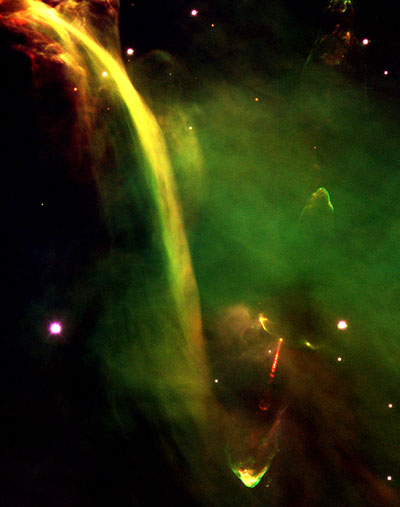
|
Explanation: Some features of HH-34 are understood -- some are not. At the core of Herbig-Haro 34 lies a seemingly typical young star. This star, though, somehow ejects energetic "bullets" of high-energy particles, appearing as red streaks toward the lower right of the this image. Astronomers speculate that a burst of these particles might rebound when gas from a disk surrounding the star momentarily collapses onto the star. Visible near the end of each light-year long jet is a glowing cap. HH-34 lies about 1500 light-years away in the Orion Nebula star-forming region. The cause of the large arc of gas on the upper left known as the waterfall remains unexplained.
|
January February March April May June July August September October November December |
| ||||||||||||||||||||||||||||||||||||||||||||||||
NASA Web Site Statements, Warnings, and Disclaimers
NASA Official: Jay Norris. Specific rights apply.
A service of: LHEA at NASA / GSFC
& Michigan Tech. U.
Based on Astronomy Picture
Of the Day
Publications with keywords: Orion - jet - arcs - star formation
Publications with words: Orion - jet - arcs - star formation
See also:
- Alnitak, Alnilam, Mintaka
- APOD: 2025 September 3 Á Cir X1: Jets in the Africa Nebula
- APOD: 2025 July 10 Á Lynds Dark Nebula 1251
- APOD: 2025 June 23 Á W5: Pillars of Star Formation
- APOD: 2025 May 9 Á IXPE Explores a Black Hole Jet
- APOD: 2025 April 28 Á Gum 37 and the Southern Tadpoles
- APOD: 2025 April 9 Á HH 49: Interstellar Jet from Webb
